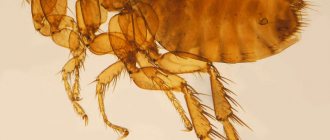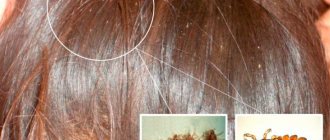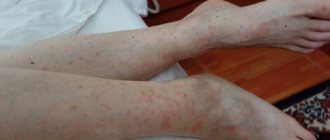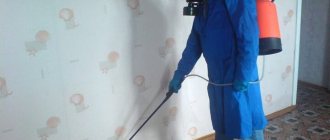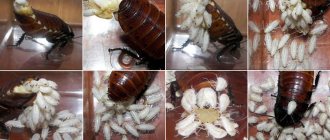Flea infestation in cats is a common and quite unpleasant phenomenon, so it is imperative to combat it. And to prevent re-infection, you need to know how quickly fleas reproduce.
Let's find out what the life expectancy of these insects is and how to properly treat the disease so that you don't have to resort to serious measures.
Features of the life of parasites
Fleas are unique creatures with a high survival rate. Insects are not picky about environmental conditions, hardy, and jump well in height and length. They live in dark, secluded places.
The optimal condition for existence is a temperature range from 20 to 30 degrees Celsius, humidity – within 60%. In such conditions, the renewal of offspring occurs every 20 days.
Interesting!
An adult can starve for more than 2 months, but in this state does not lay eggs. Flea pupae can easily tolerate temperatures of -10 degrees Celsius. At a temperature of about 28 degrees Celsius, the larvae emerge from the egg after 2 days.
The behavior, feeding habits, and living conditions of larvae and adults differ significantly. They live in different places and have different taste preferences. This situation provides high survival rates for parasites.
What fleas eat depends on the stage of development. For adult individuals, the source of nutrition is animal blood; in special situations, they bite humans. The larvae feed on food waste, rot, particles of epidermis, and feces.
Nutrition and lifestyle
Cat fleas are found on all continents and are carriers of plague, brucellosis and many other infectious diseases. Adults feed on the blood of cats, dogs, rodents, many other animals, as well as humans. The larvae develop in animal fur or on their bedding and feed on plant debris, feces, and dry blood. This type of flea parasitizes cats and rats. It also readily attacks humans, inflicting rather painful bites on the legs up to the knees. Inflammation, swelling and severe itching occur at the site of the bite. When scratching, pustular diseases develop. Massive attacks of fleas on animals cause them anemia and exhaustion.
Development of parasites
Life cycle of flea development
The life cycle of a flea is divided into several stages. An insect with complete metamorphosis.
- Egg. Under favorable conditions, it develops in about 14 days. When the air is very dry and the temperature is above 35 degrees Celsius, the eggs dry out. The same thing happens when you are on a cold surface. The size of one egg is no more than 0.5 mm. They look like a grain of sand. They become noticeable when there is a large accumulation in one place, often under the bedding or rug of animals.
- Larva. The development cycle lasts about 20 days. The rate of conversion also depends on environmental conditions. Under unfavorable conditions it can last up to 1.5 years. With an elevated temperature, she can be born quickly - in 2 days. Flea larvae go through 3 molts. Each time they increase in size. After approximately 18 days it pupates. After 2 days, a new formed flea emerges.
- Imago. Under favorable conditions, an adult lives for 3 months. During this period, 500 individuals of the new generation manage to lay eggs.
Externally, flea larvae differ significantly from adults. An ignorant person, having discovered larvae in his home, cannot understand what kind of parasites they belong to. Photos of parasites are presented below.
What does an adult look like?
Features of the appearance of parasites living on cats are:
- a durable shell of a small body covered with small bristles;
- ctenidia, or paddles, are located on the chest and head;
- fleas use antennae-shaped antennae to search for food and explore the territory;
- insects have three pairs of legs, the hind ones of which are the longest and are designed for pushing before jumping;
- the mouth is a kind of piercing and at the same time sucking apparatus;
- Behind the parasite there is a special organ that detects the slightest vibrations in the air, detecting danger.
- if the air temperature in the apartment is not higher than +37 degrees, and the humidity reaches 60%, then insects that settle on pets or indoors will live up to two months;
- at lower air temperatures, parasites can live up to one and a half years.
This structure of fleas allows them to jump on cats, dogs, furniture in the house, clothes, etc. Thanks to the bristles on the body , insects easily move between the fur, down, feathers, folds of animals and birds.
The lifespan of this type of parasite depends on the conditions in which they live:
Appearance of the larvae
Flea larvae
What flea larvae look like depends on the stage of development. Initially they are born as white, translucent worms. Length does not exceed 1 mm. Their food consists of feces of adults, skin remains, and rot. They begin to eat actively.
Over time, worms accumulate in places where they can find food:
- dog bedding, cat mats;
- trash bins;
- baskets for storing vegetables, flower pots;
- pet toilet, feeders.
A week later, the first molt occurs. Flea larvae increase in size, but do not change appearance. The worms are already more like a caterpillar. The contents of the esophagus are visible through the transparent body. The color becomes dirty gray. During the entire developmental stage, the flea molts three times. Increases to 4 mm.
At the last stage of flea development, pupation occurs. The larva envelops itself in a cocoon and stops moving. Already after 2 days it emerges from there as an adult.
On a note!
Flea larvae do not live on cats' bodies. You should look for them near the sleeping place, near the toilet. Check all the places where your pet likes to relax and spends a lot of time. Dogs also develop fleas. Animals are not even the host for these parasites. Development occurs outside the body.
How fleas reproduce in carpets
Where do flea eggs accumulate?
Up to 80% of all fleas in an apartment live and breed in carpets. Only adult individuals live on the body of the host (cats, dogs) and lead a parasitic lifestyle. The remaining stages of fleas: eggs, larvae and pupae live in the external environment - in apartments this is primarily carpets. Flea eggs laid in the fur of cats or dogs are initially wet and sticky, but then quickly dry out and fall off.
They fall where animals spend their time: eating, lying and sleeping. Only those flea eggs survive that fall into protected areas with a warm, humid microclimate. Up to 85% of domestic fleas undergo development stages in carpets.
Why flea larvae love carpets
- The dense structure of the carpet pile surface blocks the penetration of air and sunlight, which creates comfortable conditions for the growth of larvae
- The base of the carpet fibers maintains constant humidity and temperature
- Insecticides and vacuum cleaner draft, as a rule, also do not penetrate deep into the carpet, and flea larvae develop safely
- The excrement of adult fleas accumulates in the pile, which the larvae feed on.
How cocoons protect fleas in the pupal stage
- Before pupation begins, the larva finds a secluded, safe place
- The walls of the cocoon form a barrier to protect against aggressive external influences
- The sticky silk of the cocoon collects surrounding particles accumulated in the carpet pile and becomes invisible
- During the formation of cocoons, silk fibers are tightly intertwined with carpet fibers, and it is extremely difficult to remove them from there with a vacuum cleaner.
- In addition to carpets, dolls also live in pet bedding, furniture upholstery and sofa cushion covers.
Fighting methods
To kill fleas, folk remedies and professional preparations are used. It all depends on the degree of infection of the room or animal.
Methods for destroying eggs and larvae
Destruction of eggs
To exterminate the flea population, temperature is used. You can kill eggs by freezing them or washing them at high temperatures. Flea eggs are not afraid of the action of insecticides. Pests are destroyed immediately after they are born. Since the larvae do not have time to complete the full development cycle, the parasite population dies.
On a note!
It is necessary to wash your pet's rug at a high temperature, or take it out into the cold, dry it thoroughly, and leave it for two days. You can sprinkle snow on top to increase efficiency.
Fighting larvae
You can get rid of it with powder or dust. In places of detection or probable accumulation, sprinkle paths with boric acid, treat the surface with Mashenka chalk and Clean House dust. The poison enters the body through contact. The destruction of parasites occurs in 10 days. The poison remains active on the surface for about 2 months.
Where do fleas come from on a domestic cat?
The most careful care of your pet, even if it does not go outside, is not a 100% guarantee that your pet will not have parasites. People often ask how a domestic cat got fleas if it has never left the premises or interacted with outdoor animals. In fact, the transfer of parasites from one animal to another is just one way of infection. There are several of them:
- walking on land infested with flea eggs;
- contact with an infected animal;
- brought into the house by a person (most often these are insect eggs, but there may also be adults).
Therefore, a pet can easily pick up these ubiquitous parasites. If your pet walks outside, then the probability of infection is almost 100%.
Up to 200 insects can live on one animal at the same time.
Links[edit]
- Report on European wild cat species. Archived March 8, 2013, at the IUCN Species Survival Commission Wayback Machine. Cat Specialist Group
- » Ctenocephalides » . NCBI Taxonomy
. Bethesda, MD: National Center for Biotechnology Information. Retrieved January 16, 2022. - ^ ab Sue Paterson (16 March 2009). A Guide to Skin Diseases in Dogs and Cats. John Wiley and Sons. paragraph 122. ISBN 978-1-4443-0932-4.
- ^ ab "Cat flea". Connecticut Agricultural Experiment Station. Retrieved October 17, 2008.
- Rust, MK; Dryden, M. W. (1997). "Biology, ecology and management of the cat flea". Annual Review of Entomology
.
42
: 451–73. DOI: 10.1146/annurev.ento.42.1.451. PMID 9017899. - ^ abcd Dennis Jacobs; Mark Fox; Linda Gibbons; Carlos Hermosilla (October 5, 2015). Principles of Veterinary Parasitology. Wiley. paragraph 34. ISBN 978-1-118-97744-6.
- Fleas. P. G. Koehler and F. M. Oi. Printed July 1993, revised February 2003. Courtesy of the University of Florida.
- [1] Crosby, J. T. What is the life cycle of fleas. Accessed 6 August 2012
- ^ a b "Fleas". University of Florida. Retrieved March 13, 2009.
- ^ ab "Insects and mites: fleas". Department of Entomology at Purdue University. Retrieved September 8, 2008.
- ^ B "Biology, Ecology and Cat Flea" (PDF). University of California, Riverside. Archived from the original (PDF) on January 05, 2007. Retrieved September 8, 2008.
- Teltow GJ, Fournier PW, Rawlings JA (May 1991). "Isolation of Borrelia burgdorferi from arthropods collected in Texas." Am J Trop Med Hyg
.
44
(5): 469–74. PMID 2063950. - "Discover Entomology at Texas A&M University - Extension Publication E-433: Flea Control". Archived from the original on 2014-12-26.
Prevention
Insects can enter an apartment on a cat or their eggs are carried by the owner on shoes. To prevent the penetration of ectoparasites, you should protect your pet from them. Door mats and shoe soles should be treated with insecticides. If you cannot remove fleas with your own efforts, seek the help of a professional.
We invite you to join our Zen channel and group on VKontakte or Odnoklassniki, where new articles for pet owners are published.
Similar articles:
- My cat has a nosebleed - what should I do?
- Inflammation of the lower lip in a cat
- Clear nasal discharge in cats
Briefly about the anatomical process of mating in fleas
The continuation of the genus of ectoparasites always depends on the female, since fleas reproduce by laying eggs. The features of this biological process can be explained by the physiological structure of the insect’s body.
Male fleas have two testes, at the end of each of which there is a reproductive claw - it is from this that the seed comes out when the female is fertilized. The female individual has a more complex structure of the reproductive system. Together with the ovaries, which are located in place of the uterine cavity, there are oviducts.
Mating takes a lot of time. It takes several hours for fertilization to occur. In this case, the contact between the female and the male lasts about 15-20 minutes - during this time the female climbs onto the partner’s back and absorbs seminal fluid from his genital claw.
Adult fleas have a rather unusual appearance: their body is flattened laterally, and its length can vary, depending on the type of parasite. Cat fleas grow up to 4-5 mm, and males can be much smaller than females. After feeding, the size of the fertilized female can reach 1 cm.
Destruction of fleas
Expelling ectoparasites from a pet does not guarantee that they will leave the cat and its owner alone. It is necessary to destroy immature forms of fleas that live on carpets, under them, on balconies, in closets behind baseboards, and other corners. The extermination action is carried out using ready-made aerosols or pest control emulsions.
Aerosol for exterminating ectoparasites
Treatment of an apartment against ectoparasites with a professional product is preceded by preparatory cleaning. Remove garbage from living rooms, closets, shelves, balconies, and under bathtubs. They move furniture away from the walls, freeing up access to baseboards - the favorite refuges of adults and larvae. People, as well as pets, are removed from the apartment for several hours.
Prepare a working solution according to the instructions for use of the drug.
Professional means for disinfection of premises
The operator processing the apartment puts on gloves, goggles, and protective clothing. The working solution is used to irrigate the floor, walls, furniture, rugs. They are rolled up and the reverse side is wetted. The surfaces of storage rooms and balconies are treated with special attention.
To avoid poisoning, the operator is recommended to use a sorbent that absorbs toxins, mainly Activated Carbon.
Disinfestation in the apartment
The room is closed and left for the time specified in the instructions for using the disinfectant.
After the necessary exposure, wet cleaning of all treated areas is carried out. The rugs are air dried. The litter is destroyed. Clothes and linen are washed with hot water. This procedure will destroy the eggs.
There is a possibility that some embryos, as well as pupae, will remain viable after disinfestation. To destroy hatched arthropods, treatment must be repeated no later than 14 days.
Harm to humans
The damage caused by ectoparasites to people is as follows:
- Bites.
- Transmission of contagious diseases.
Bites
A flea bite is regarded by the body as an irritant:
- A rash appears.
- Scratching appears, fraught with the development of suppuration.
- Dermatitis occurs, which can transform into pyoderma.
- Superficial lymph nodes become hypertrophied.
- Insomnia, migraine, diarrhea, and difficulty breathing develop.
Fleas are stuck
Transmission of contagious diseases
Cat fleas transmit the following infectious diseases to humans:
- Anthrax.
- Tifa.
- Encephalitis.
- Brucellosis.
- Worms.
Review[edit]
Ctenocephalides felis felis
The cat flea belongs to the insect order Siphonaptera, which is an obligate hematophage in its adult stage. Adults of both sexes are 1 to 2 mm long and are usually reddish-brown in color, although the abdomen of pregnant females is often swollen with eggs, making them appear creamy and dark brown. Like all fleas, the cat flea compresses laterally, allowing it to slip between the host's sometimes dense hairs just above the top layer of skin, resulting in a very thin insect that can be difficult to observe, even if the host's fur is clean. white. [4]
The cat flea affects both cats and dogs all over the world. [5] The cat flea can also maintain its life cycle on other carnivores and omnivores, but they are selected only when more suitable hosts become unavailable. [4] Adult cat fleas do not leave their hosts voluntarily, but transmission by adults
fleas rarely occur between animals, with the exception of animals that sleep together. A flea that separates from its host often dies within a few hours of starvation. [6]
Reproduction
Flea reproduction is a long and difficult process.
The female climbs onto the male's back and pulls the male's sex claw into the special spermatheca. This process can take up to 15 minutes, and the mating itself can take about an hour. In the female’s body, from 5 to 15 eggs can mature. If the female is well-fed, then fertilized eggs are laid. Under favorable feeding conditions, the female can carry out several such clutches per day, but more often she is limited to one. For each mating and laying of fertilized eggs, both the female and the male need nutrients - the blood of the host. Without food, the flea does not reproduce.
Shooting eggs from the abdomen allows them to be distributed over large distances from each other and provide food. Eggs most often end up on the animal’s skin and fur, on the bedding, and in the pet’s favorite habitats. If the food supply is good, then during its life a flea can lay about 500 eggs. This high reproductive capacity makes cat fleas one of the most common and widespread external parasites on pets.
